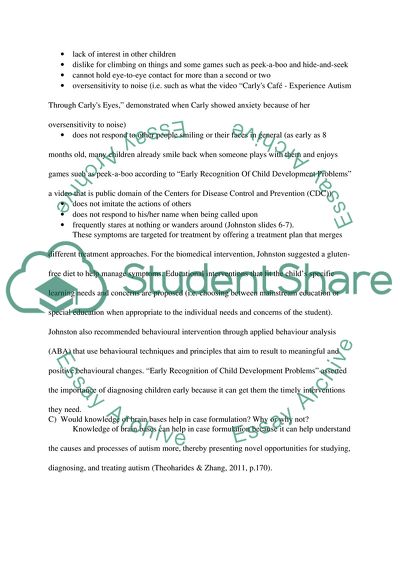Brain Basis of Autism, Behaviours, and Case formulation Research Paper. https://studentshare.org/medical-science/1806877-autism-spectrum-disorders
Brain Basis of Autism, Behaviours, and Case Formulation Research Paper. https://studentshare.org/medical-science/1806877-autism-spectrum-disorders.


